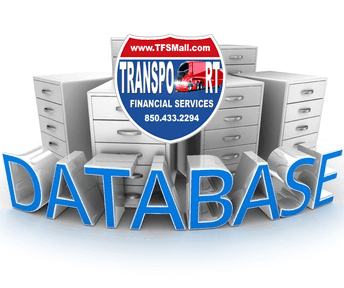https://www.thetrucker.com/fmcsa-reminds-truckers-drug-alcohol-clearinghouse-coming-soon/

The clearinghouse will be a professional truck driver database that will serve as a centralized record of all failed drug or alcohol tests, whether from pre-employment screenings, post-crash tests or random. (©2019 FOTOSEARCH)
Remember two years ago, when it seemed like the entire trucking industry was counting down the days to the ELD deadline?
Well, the Federal Motor Carrier Safety Administration (FMCSA) wants drivers to be aware of another countdown happening right now, although with much less hoopla than the Great ELD Panic of ’17.
At the recent Mid-America Trucking Show, Joe DeLorenzo, FMCSA director of enforcement and compliance, gave a presentation to raise awareness about the soon-to-be launched federal CDL Drug and Alcohol Clearinghouse.
Mandated as part of the Moving Ahead for Progress in the 21st Century Act, or MAP-21, in 2012, the same piece of legislation that bore the ELD mandate, the drug and alcohol clearinghouse is scheduled to launch January 6, 2020.
The clearinghouse will be a professional truck driver database that will serve as a centralized record of all failed drug or alcohol tests, whether from pre-employment screenings, post-crash tests or random. All refusals to take a drug or alcohol test will also be recorded.
“I came here with a bit of a mission on the drug and alcohol clearinghouse rule,” DeLorenzo said to the MATS audience. It has come to the agency’s attention the clearinghouse has been flying under the radar, a bit, and not enough drivers seem to know about it or they haven’t gotten a full explanation of what the clearinghouse will contain and what it will be used for.
DeLorenzo said drivers have said to him, “Well, I don’t do drugs, so I don’t have to worry about this.”
“Actually, that’s not the case,” DeLorenzo said. “Everybody needs to know about this and get going on it.”
Starting in January, carriers will be required to query the database as part of the new-driver hiring process to ensure that the candidate does not have any failed tests or refusals in the previous three years. Carriers can only gain access to a driver’s record and make the mandatory query with the consent of the driver, and the only way a driver can give that consent is to be registered in the clearinghouse.
So, technically, drivers are not going to be required to register in the clearinghouse, DeLorenzo said. However, if you ever want to get hired anywhere again you’ll have to be registered in the clearinghouse.
“If you’re just kind of staying where you’re at, no intention of leaving, or if you are working for yourself, or if you are nearing retirement, you may decide not to register,” he said. “But in an industry with 100%-plus turnover, I know people are always looking for a new job, a different job, a better job. Any driver who’s going to apply for a new job after this rule goes into effect is going to have to have an account and is going to have to be able to go in.”
DeLorenzo explained why the clearinghouse has been set up this way. Today, when someone applies for a job, they get tested as part of the process. They fail the test and the carrier doesn’t hire them. Three months later, they stay clean just long enough, the apply somewhere else and that company hires them, not knowing about the prior failure.
Starting January 6, carriers will be required to upload notices into the clearinghouse of all failed drug tests by drivers and driving applicants, as well as all refusals to test, as they occur.
The database is designed to go back three years. At first, employers will have to conduct both electronic queries within the clearinghouse and manual inquiries with previous employers to cover the preceding three years to meet the mandated hiring requirement. As of January 6, 2023, they will only need to check the clearinghouse.
Drivers’ records will only contain positive tests and refusals. When a prospective employer makes a query, they will be told if the record is clean. If there are entries, they will be able to get more details.
If a driver has a failed test, the database will also record whether that driver has completed the return-to-duty process.
Drivers will also be able to review their own records, DeLorenzo said, which is another incentive to register. If a driver finds an entry they wish to dispute, they can file a DataQ request to have it corrected.
The clearinghouse website is already up and running. Drivers can go to Clearinghouse.fmcsa.dot.gov to read about the clearinghouse and to register their email addresses for any updates. Actual registration is scheduled to begin in October.
DeLorenzo said he is hoping to raise more awareness about the clearinghouse now so they start registering in October instead of finding out the hard way come February when they try to apply for a job.
“What I’m trying to avoid, actually, is human nature, which is to wait until the very last minute.”









